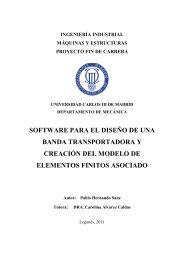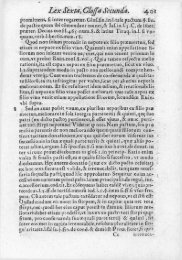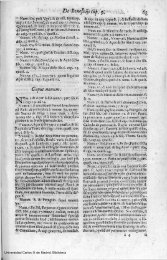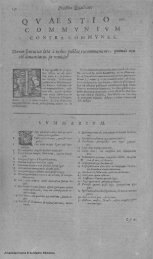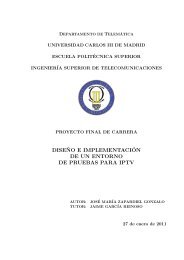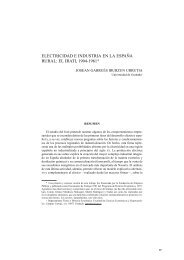Land tenure inequality, harvests, and rural conflict ... - e-Archivo
Land tenure inequality, harvests, and rural conflict ... - e-Archivo
Land tenure inequality, harvests, and rural conflict ... - e-Archivo
You also want an ePaper? Increase the reach of your titles
YUMPU automatically turns print PDFs into web optimized ePapers that Google loves.
<strong>L<strong>and</strong></strong> <strong>tenure</strong> <strong>inequality</strong>, <strong>harvests</strong>, <strong>and</strong> <strong>rural</strong> <strong>conflict</strong>. Evidence from Southern<br />
Spain in the 1930s.<br />
JEL: J43, J52, N34, N54, O13, Q15<br />
Key words: <strong>inequality</strong>, <strong>rural</strong> <strong>conflict</strong>, unemployment, interwar Europe, Spanish Civil<br />
War (1931-1936).<br />
ABSTRACT<br />
This paper analyses <strong>rural</strong> <strong>conflict</strong> in one of the most volatile areas of interwar Europe,<br />
the latifundia regions of the South of Spain. The historical <strong>and</strong> economics literature<br />
argues that <strong>rural</strong> <strong>conflict</strong> was a bottom-up, spontaneous response of l<strong>and</strong>less peasants<br />
to unemployment, bad <strong>harvests</strong>, l<strong>and</strong> ownership <strong>inequality</strong>, changes in property rights,<br />
<strong>and</strong> the lack of enforcement of pro-worker legislation. A second generation of<br />
historical studies has focused on democratization <strong>and</strong> concomitant changes in<br />
collective bargaining <strong>and</strong> labor market institutions. Was <strong>conflict</strong> caused by structural<br />
factors like poverty, <strong>inequality</strong> or unemployment or was <strong>conflict</strong> an endogenous<br />
response to political change? This paper analyzes the pattern of <strong>conflict</strong> in in three<br />
Andalusian provinces (Córdoba, Jaén <strong>and</strong> Seville) in the early 1930s to argue that the<br />
timing <strong>and</strong> geographical distribution of <strong>conflict</strong> is consistent with a wave of<br />
mobilization linked to greater political opportunities favored by lower repression, proworker<br />
institutional change, <strong>and</strong> labor market intervention. Time-series <strong>and</strong> crosssectional<br />
variation in levels of <strong>rural</strong> <strong>conflict</strong> suggest <strong>conflict</strong> was not a spontaneous<br />
response to dismal living st<strong>and</strong>ards <strong>and</strong> <strong>inequality</strong>. Rather, it emerged in large, fast<br />
growing towns of Andalusia <strong>and</strong> was mediated by the strategic interaction of<br />
authorities <strong>and</strong> experienced <strong>rural</strong> unions. The instances of <strong>rural</strong> <strong>conflict</strong> analyzed here<br />
suggest it is very difficult for new democratic goverments in agrarian societies to<br />
stave <strong>rural</strong> <strong>conflict</strong> off with labor-friendly intervention. It is often argued that <strong>conflict</strong><br />
precedes political <strong>and</strong> institutional change, but it is shown here that <strong>conflict</strong> can<br />
emerge abruptly as a response to those changes.<br />
1




